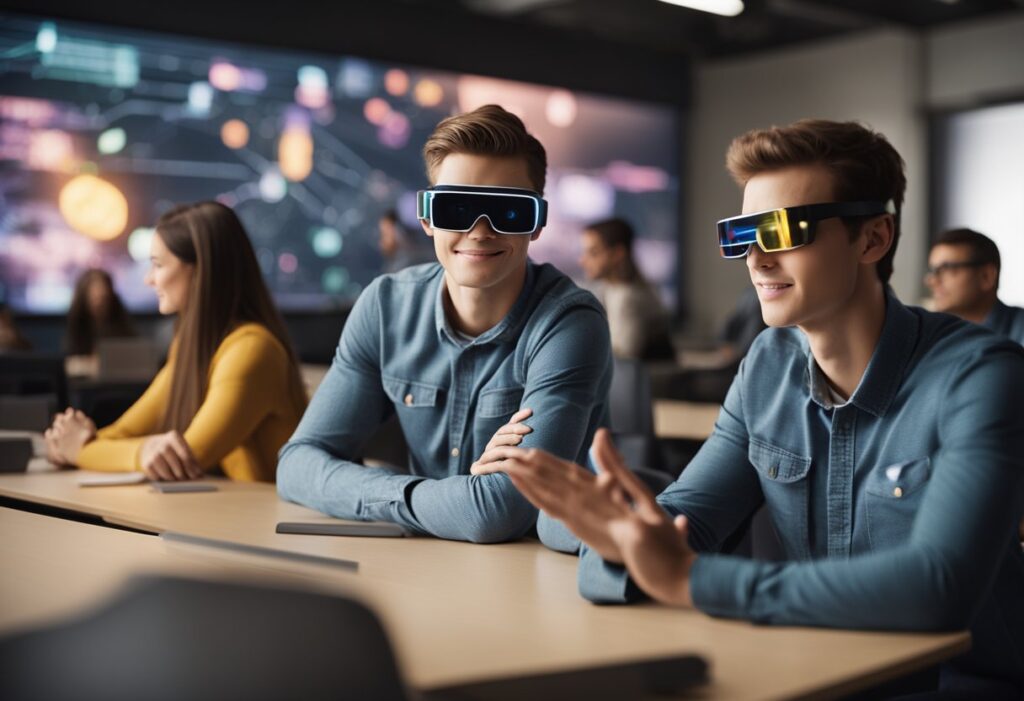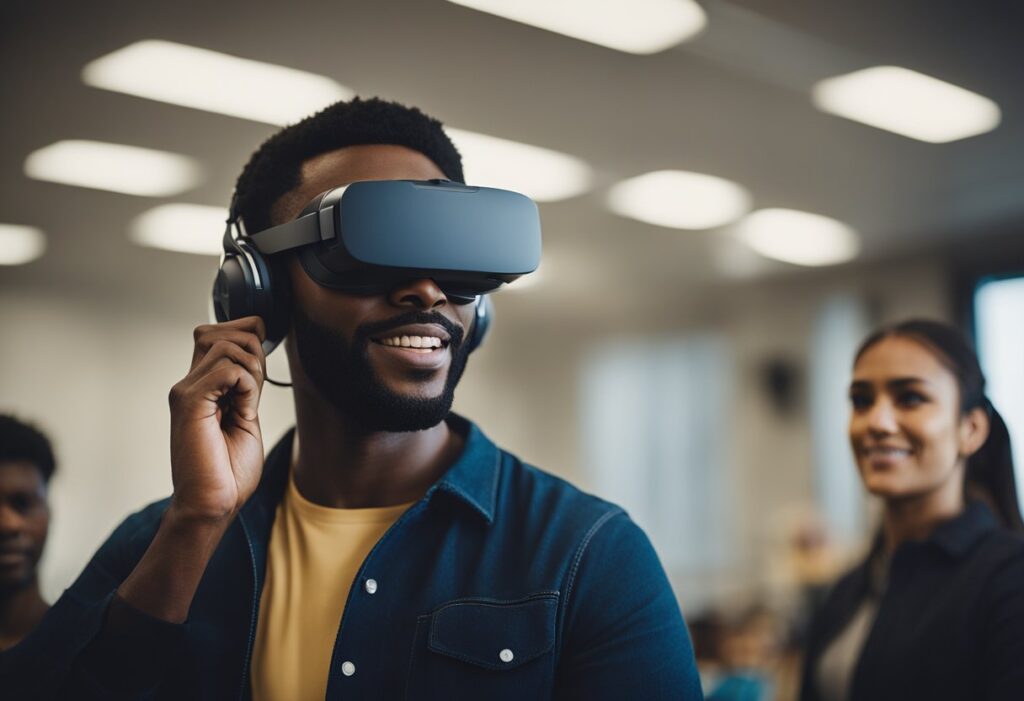Augmented reality (AR) represents a transformative approach to education and training, enhancing traditional learning experiences. It allows learners to engage with interactive environments, bridging the gap between theoretical knowledge and real-world application. By integrating AR technology, educators can create immersive lessons that foster better understanding and retention of information.

Incorporating AR into training programs can lead to improved skill development, particularly in fields requiring hands-on practice. For example, medical students can visualize intricate body systems, while technical trainees can simulate complex machinery operations. This interactive learning not only makes the process more engaging but also prepares individuals more effectively for future challenges.
The potential of augmented reality in educational settings is vast and largely untapped. As institutions and organizations begin to embrace this innovative technology, they set the stage for a new era of learning that responds to the needs of a digitally driven society.
The Evolution of Augmented Reality in Education
Augmented Reality (AR) has transformed education by enhancing engagement and interactivity through innovative technologies. Understanding its progress provides insight into its impact today and the possibilities for future advancements.
Historical Overview
The concept of Augmented Reality traces back to the 1960s, with early experiments in computer-generated graphics. One notable project was Ivan Sutherland’s “Sword of Damocles,” which displayed simple visuals in a head-mounted display.
In the 1990s, AR gained traction with advancements in mobile technology. Educational applications began to emerge, allowing students to visualize complex subjects, like anatomy and physics. By the late 2000s, the rise of smartphones made AR more accessible, fostering greater experimentation in classroom settings.
Current Trends and Developments
Today, AR is at the forefront of educational innovation. Numerous applications incorporate AR to enhance learning in STEM fields, language acquisition, and history. Tools like Google Expeditions and AR flashcards enable immersive experiences that bring lessons to life.
Institutions are increasingly adopting AR for teacher training as well. Educators use simulations to practice classroom management techniques, allowing for real-time feedback in safe environments.
Incorporating AR in learning supports diverse learning styles. Visual learners benefit from interactive 3D models, while kinesthetic learners engage with hands-on experiences. This versatility continues to drive interest in AR as a vital educational resource.
Technological Foundations of Augmented Reality
Augmented Reality (AR) relies on a combination of core technologies and advancements in hardware and software. These elements work together to create immersive educational experiences.
Core Technologies and Infrastructure
AR depends on several foundational technologies. Key components include computer vision, head tracking, and environment recognition.
- Computer Vision: This technology enables AR systems to interpret and interact with the surrounding environment. It helps identify objects, surfaces, and spatial dimensions.
- Head Tracking: By constantly calculating the user’s head position and orientation, AR can overlay digital content accurately relative to the user’s viewpoint.
- Environment Recognition: This allows AR applications to understand the physical space, facilitating interaction between digital and real-world objects.
Together, these technologies form the backbone of AR systems, enabling seamless integration with educational content.
Advances in AR Hardware
Recent advancements in hardware have significantly enhanced AR capabilities.
- Smart Glasses: Devices like Microsoft HoloLens and Magic Leap have improved field of view and comfort. They also offer advanced sensors for better interactivity.
- Mobile Devices: Smartphones and tablets have become powerful AR platforms. They utilize built-in cameras and sensors, making AR accessible to a wider audience.
- Wearable Devices: Innovations in wearables, such as AR gloves and headsets, provide tactile feedback and increase immersion. This expands possibilities for hands-on learning in various fields.
The evolution of these hardware components continues to shape AR’s role in education and training.
Software and Application Platforms
AR software platforms and applications are crucial for deployment in educational settings.
- AR Development Kits: Platforms like ARKit and ARCore enable developers to create applications efficiently. They provide tools for motion tracking, environmental understanding, and light estimation.
- Content Creation Tools: Software such as Unity and Vuforia allows educators to craft customized experiences. These tools support interactive content, enhancing student engagement.
- Learning Management Systems (LMS): Integration of AR with LMS can deliver immersive educational resources. This encourages collaborative learning and enhances content accessibility for students.
The synergy between software and application platforms amplifies AR’s impact in today’s educational landscape.
Augmented Reality in Classroom Learning
Augmented reality (AR) transforms traditional classroom learning by adding interactive and immersive educational experiences. It enhances curriculum delivery and creates engaging learning environments that foster collaboration and creativity.
AR for Enhanced Curriculum Delivery
AR enables educators to present complex concepts in a visually engaging manner. For example, 3D models allow students to explore subjects like anatomy or physics in detail. Students can interact with virtual objects, facilitating deeper understanding.
- Benefits of AR in Curriculum:
- Improved retention of information
- Increased student engagement
- Real-time feedback on learning progress
Additionally, AR resources can be tailored to meet diverse learning needs, ensuring that all students benefit from personalized educational experiences.
Interactive Learning Environments
AR promotes active participation in the classroom. With interactive AR applications, students can engage in group activities where they collaborate on projects or solve problems together.
- Features of Interactive Learning:
- Immersive simulations
- Virtual field trips
- Enhanced collaboration tools
These environments encourage critical thinking and creativity, allowing students to explore subjects beyond the textbook. The integration of AR facilitates experiential learning, enriching the educational landscape.
Case Studies: AR in Schools
Several schools have successfully implemented AR technologies, demonstrating their effectiveness in enhancing education. For instance, a school in California incorporated AR into its science curriculum, allowing students to visualize chemical reactions in real-time.
Another example is a program in New York that uses AR for historical education. Students experience immersive historical events, promoting engagement through interactive storytelling.
- Key Insights from Case Studies:
- Increased student motivation
- Higher academic achievement
- Enhanced teacher-student interaction
These case studies highlight the potential of AR to reshape traditional educational practices, paving the way for innovative teaching methods.
Augmented Reality in Professional Training

Augmented reality (AR) significantly enhances professional training by providing immersive and interactive experiences. Through AR, employees can engage with their training content in ways that traditional methods cannot match, leading to better retention and application of skills.
Corporate Training Applications
AR technology offers innovative solutions for corporate training programs. Employees can participate in simulations that mimic real-world scenarios, such as customer interactions or machine operations. This practical approach enables trainees to experience potential challenges and develop problem-solving skills in a safe environment.
- Interactive Scenarios: Engages employees through realistic simulations.
- Cost-Effective Training: Reduces the need for physical resources and travel.
- Performance Tracking: Provides insights into trainee progress and areas needing improvement.
Implementing AR in corporate settings fosters a continuous learning culture. Employees can access training materials on-demand, allowing for flexible and personalized learning experiences.
Skill Development and Performance Support
AR effectively addresses skill development by providing real-time guidance. Workers can use AR tools to receive instructions and feedback while performing tasks, which enhances their learning process.
- On-the-Job Training: Offers immediate support during complex procedures.
- Visual Guidance: Displays step-by-step instructions in the worker’s field of view.
- Reduced Errors: Minimizes mistakes by reinforcing correct techniques.
Such support benefits various industries, allowing employees to acquire skills efficiently while increasing confidence in their abilities.
Healthcare and Medical Training
In healthcare, AR transforms training for medical professionals. It allows for detailed visualizations of anatomy and procedures, improving understanding and skill acquisition.
- Surgical Simulations: Trainees can practice in a risk-free environment using simulated procedures.
- Patient Interaction Training: Enables professionals to hone their communication and bedside manners with virtual patients.
- Emergency Response Drills: Provides scenarios to prepare for critical situations effectively.
This technology in medical training leads to better-prepared healthcare providers, ultimately benefiting patient care and outcomes.
Design and Development of AR Learning Experiences
Creating effective augmented reality (AR) learning experiences requires a thoughtful approach to instructional design, content creation, and user experience. These elements work together to enhance engagement and facilitate deeper understanding.
Instructional Design Principles for AR
AR learning experiences should align with established instructional design principles. These include clarity of objectives, active engagement, and feedback mechanisms. Clear objectives guide the learner’s journey, ensuring they understand the goals.
Active engagement is essential in AR. This can be achieved by encouraging exploration and interaction with virtual elements. Additionally, providing timely feedback helps learners adjust their methods and deepen their understanding.
It is also beneficial to incorporate scaffolding techniques. This allows learners to build knowledge progressively. Designing experiences that adapt to users’ skill levels ensures a personalized learning path, which can enhance retention rates.
Creating Immersive and Engaging Content
Immersive content can significantly enhance learning outcomes in AR. This includes incorporating 3D models, animations, and interactive elements. For instance, educational apps can use simulations to demonstrate complex concepts, making them easier to grasp.
Content relevance is crucial. It should connect to real-world applications to maintain learner interest. This connection helps learners see the value of their education and encourages them to engage more actively.
The narrative structure can also enhance engagement. Crafting a compelling story around the learning objectives can create an emotional connection. This connection motivates learners to interact with the AR experience and fosters a deeper understanding of the subject matter.
User Experience and Accessibility Considerations
User experience (UX) design plays a vital role in AR learning. An intuitive interface allows users to navigate easily and focus on the content rather than the technology. Clear visual cues can guide users through experiences seamlessly.
Accessibility must also be prioritized. AR applications should accommodate diverse learning styles and needs. This includes offering multiple modes of interaction, such as voice commands and touch controls.
Furthermore, it is essential to consider varying physical environments. AR experiences should be adaptable to different settings, whether in a classroom or at home. Ensuring that learners can engage effectively in various contexts enhances the overall effectiveness of the learning experience.
Cognitive Impact of Augmented Reality
Augmented reality (AR) significantly influences cognitive processes in educational settings. By integrating digital information with the real world, AR enhances learning experiences, improves memory retention, and fosters the development of crucial cognitive skills.
Enhancing Cognitive Skills Through AR
AR provides interactive experiences that engage students actively. This interactivity promotes critical thinking and problem-solving skills.
For instance, simulations in AR environments allow learners to experiment with complex concepts in a risk-free setting. By visualizing phenomena, users can analyze data and explore scenarios that enhance their decision-making capabilities.
Additionally, the multi-sensory nature of AR encourages learners to engage both visually and kinesthetically, which reinforces their understanding and retention of the material.
Visual Learning and Memory Retention
AR leverages visual elements to create immersive learning experiences. Visual learning aids in processing information more efficiently, as learners can relate digital content to real-world contexts.
Research indicates that students using AR technology have higher retention rates compared to traditional learning methods. The combination of graphics, animations, and real-time feedback enhances the memorization process.
Using AR, learners can visualize intricate subjects like anatomy or physics. This visualization transforms abstract concepts into tangible experiences, leading to deeper cognitive engagement and improved comprehension.
Pedagogical Implications
The integration of AR introduces new pedagogical strategies. Educators can utilize AR to create customized learning paths tailored to individual needs.
For example, AR applications can adapt to a learner’s pace, providing additional support where necessary. This adaptability fosters a more personalized learning environment.
Additionally, AR encourages collaborative learning. Students can share their experiences in AR, promoting teamwork and communication skills. The collaboration also allows for peer teaching opportunities, enhancing the learning experience for all involved.
